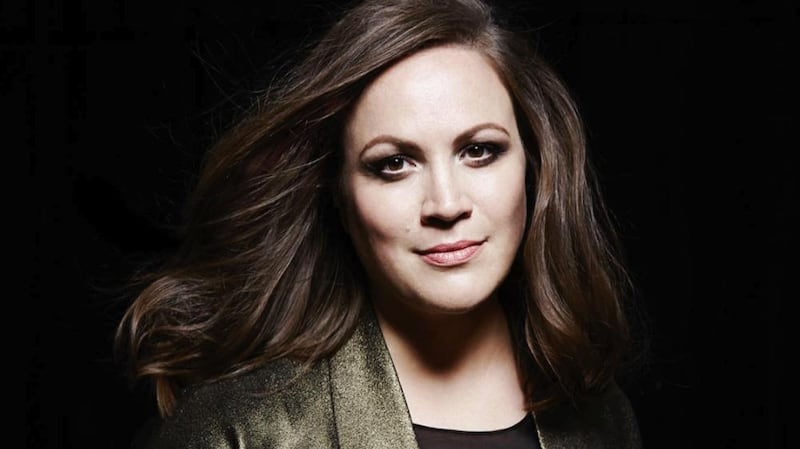The media in Ireland and Britain are writing, talking and agonising about Brexit, an event that has not happened yet. Mutterings are already under way about the next financial crisis. "The next downturn could rival the Great Depression," says Ambrose Evans-Pritchard in the Telegraph. Across the world, people seem to be as interested in the future of Donald Trump as much as they are transfixed by the content of his latest pronouncement or tweet. The future can be endlessly fascinating. At the very least you may be able to do something about it, even if it is only to prepare yourself for it. The circumstances of concerts by two Irish orchestras – the Irish Chamber Orchestra and the RTÉ National Symphony Orchestra – that I heard in Dublin last week set me both to thinking about the future and rooting in the past. The key years are 1980 and 2021. September 1980 saw the start of the last 12 months of concert life in Dublin without the National Concert Hall. May 2021 is scheduled to see the start of a two-year-plus period in which the capital will once again have to lead its musical life without the NCH as we know it. Back in 1980 the RTÉ Symphony Orchestra, precursor of today's RTÉ National Symphony Orchestra, gave most of its concerts in two venues – the St Francis Xavier Hall that used to stand at the North Circular Road end of Upper Sherrard Street, and the Gaiety Theatre. Both venues were pretty awful places for orchestral concerts.
James Galway concert
The RDS concert hall hosted an RDS series of chamber music and instrumental recitals from October to March, and the venue was widely used by other promoters, too. In September 1980 there was a concert by flautist James Galway with the New Irish Chamber Orchestra (today's Irish Chamber Orchestra) in advance of a tour to Germany that played in Aachen, Wiesbaden, Kassel, Mülheim, Marburg, Crailsheim, Munich, Frankfurt, Hanover, Hamburg, Bremen, Bielefeld, Helmstedt and the Philharmonie in Berlin. José Carreras, later to become one of the "three tenors", gave a concert there courtesy of the Dublin Grand Opera Society, and Dmitry Alexeev, who won the Leeds International Piano Competition in 1975, also played there. Other piano recitals were given in Castletown House by Howard Shelley and John O'Conor (who also appeared at the St Francis Xavier Hall in Bruch's Concerto for two pianos with Martin Berkofsky), and by John Gibson at the Edmund Burke Theatre in TCD, which was also the venue for an English-language production of Mozart's Così fan tutte by Kilkenny Chamber Opera. The National Gallery on Merrion Square was the regular performance base of the RTÉ Academica String Quartet and the RTÉ Singers. The Dublin leg of a tour of Italian baroque chamber music by Collegium Tergestinum (whose membership included Irish flautist Patricia Dunkerley) was St Michael's Church in Dún Laoghaire. And St Ann's Church, Dawson Street, was in use for Bach cantatas conducted by John Beckett and a coming-out recital promoted by the Music Association of Ireland.
Cultural quarter
Venues used later that year included the Exam Hall in TCD, the hall of Coláiste Mhuire on Parnell Square (a space soon to be subsumed into the new cultural quarter that's being developed there), the now derelict John Player Theatre on the South Circular Road, the hall of St Patrick's College of Education in Drumcondra (where the Wicklow Opera Group presented Nicolai's The Merry Wives of Windsor), the hall of Corpus Christi National School on Home Farm Road (where a tour by the original Irish National Opera company brought Rossini's Barber of Seville), the Carroll's Theatre on Grand Parade (later the headquarters of the Irish Nationwide Building Society), the Dublin Institute of Adult Education on Mountjoy Square, and a range of churches in the city centre and the suburbs, from Sutton to Monkstown to Tallaght. Listening, or rather, trying to listen to the Irish Chamber Orchestra at Christ Church Cathedral last Thursday, with the regular swish of tyres and the occasional wail of sirens competing with the music, brought home how limited the viable options are for classical concerts outside of the National Concert Hall.
Small audiences
The ICO has in the past used the NCH itself, offering repertoire choices that almost guaranteed small audiences, IMMA, the RDS, the Larkin Theatre at DCU, the Mansion House, and is now using a venue that literally undermines the efforts of players and conductor – on Thursday the excitingly, wilfully dynamic Jean-Christophe Spinosi. With the NCH out of action the ICO is going to find its options even more limited as other promoters suck up viable alternatives. The RTÉ NSO played Mahler's Resurrection Symphony under Robert Trevino with the RTÉ Philharmonic Choir on glorious form and a particularly touching contribution from mezzo-soprano Jennifer Johnston in this most stirring of late-19th-century symphonies.

Happy the promoters
Come 2021, the options for whatever the NSO has by that time morphed into will be absolutely clear. The Helix at DCU, which wipes the floor with the NCH when it comes to acoustics, will be the only game in town. It's been used successfully by the ICO in the past and, although it is pretty much a classical graveyard at the moment, that's all likely to change in three years' time. Happy the promoters who worry about the future and get their dates firmed up there before the reality of life without the NCH fully dawns on the world at large. The NCH may well perceive a conflict of interest in the use of a rival venue, The Helix, by an orchestra that the Government appears to be gifting to the NCH. It's a conflict that Minister for Culture Josepha Madigan may want to keep a close eye on.
mdervan@irishtimes.com















